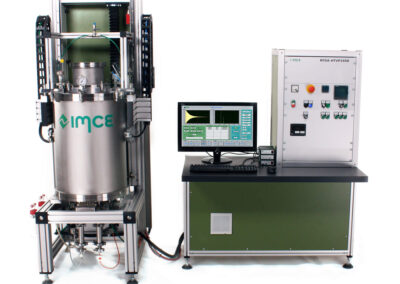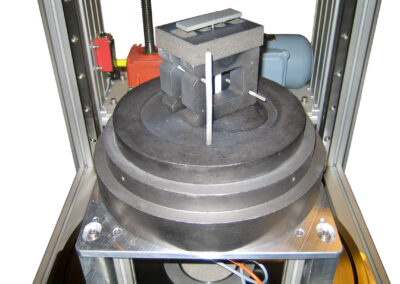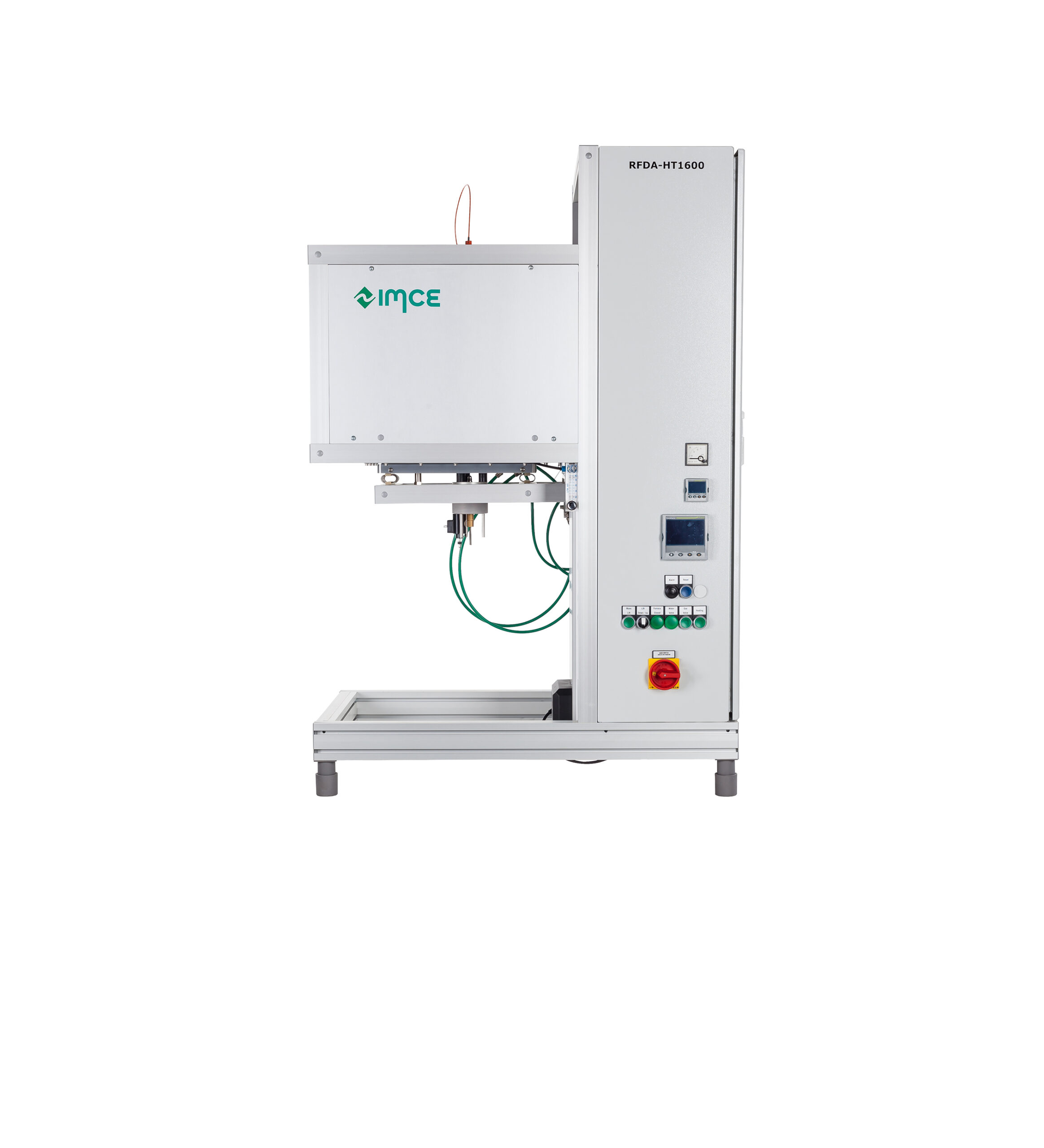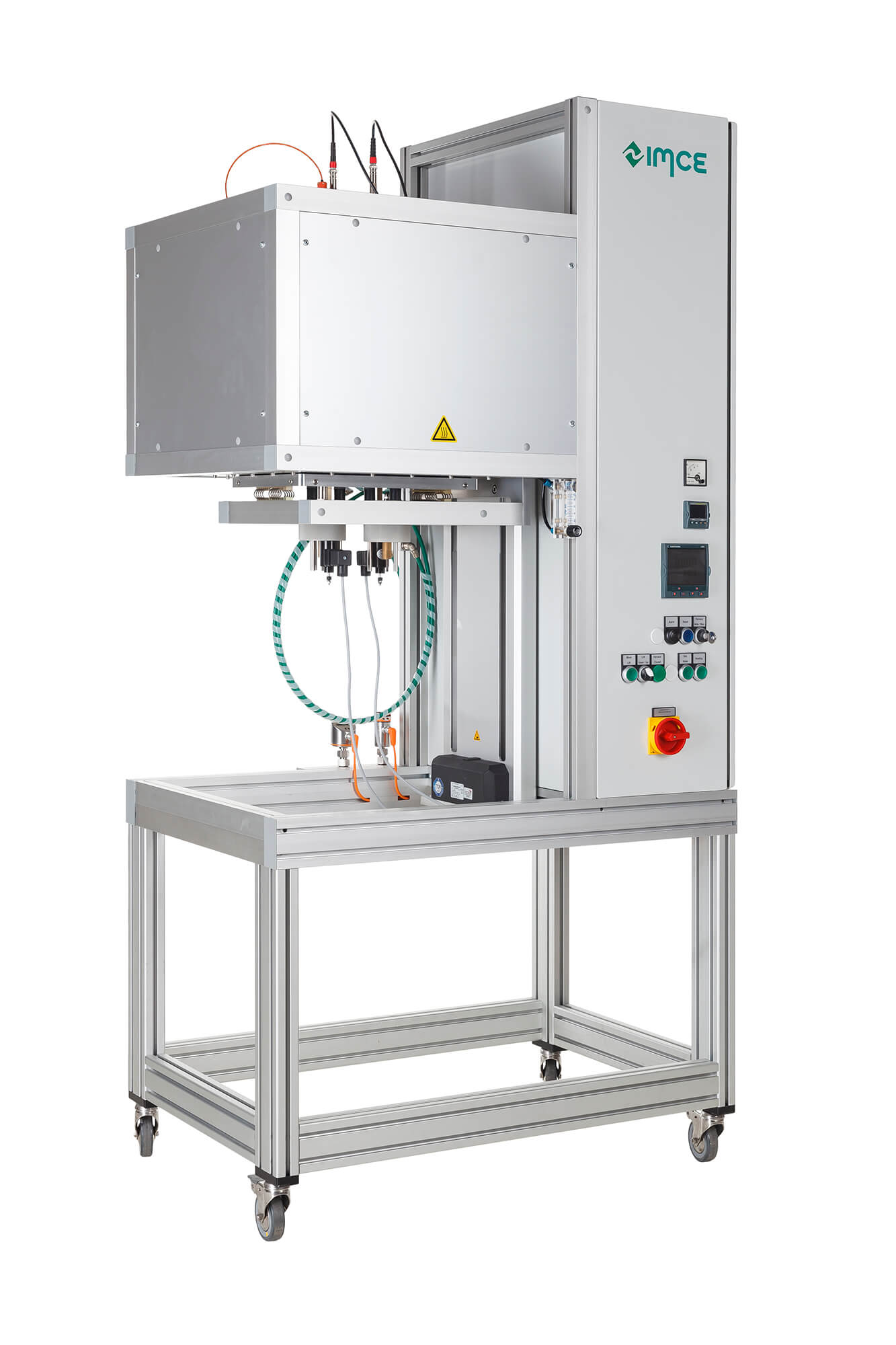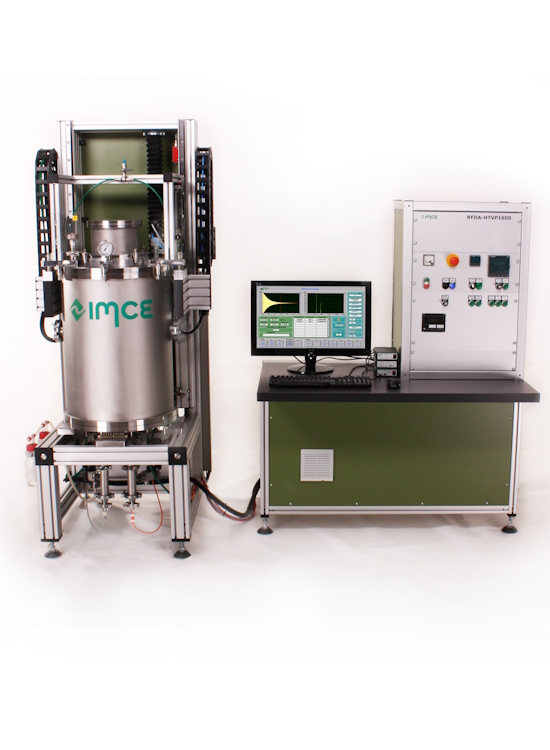RFDA HTVP1700C
DESCRIPTION
The HTVP1700C furnace is designed to perform impulse excitation measurements at elevated temperatures up to 1700 °C in an inert atmosphere or up to 1500 °C in vacuum (10-2 mbar). Measurements can be performed in predefined intervals during heating and cooling (1-5 °C/min) in order to determine the elastic properties and damping as function of the temperature. The adjustable positioning of the excitation system and the top hat system guarantee an optimal sample configuration and manipulation.The HTVP1700C furnace is equipped with a turbomolecular vacuum pump to perform measurements in a controlled atmosphere (inert or vacuum). During vacuum measurements, a laser vibrometer is used to detect the vibration signal.
| Internal dimensions of the furnace | Diameter: 170 mm Height: 232 mm |
| Temperature range | Room temperature – 1700 °C (inert) Room temperature – 1500 °C (vacuum) |
| Heating elements | Graphite heating elements |
| Heating/cooling rate | 1 – 5 °C/min |
| Isolation material | Carbon |
| Furnace wall cooling | Water jacket |
| Atmosphere | Inert or vacuum |
| Vacuum pump | Turbomolecular pump |
| Minimum pressure | 10-2 mbar |
| Furnace (sample) loading | Top hat |
| Number of samples | 1 |
| Max. length of sample | 120 mm |
| Positioning excitation system | Adjustable |
| Positioning microphone | Fixed (3 positions) |
| Laser vibrometer | Optional |
Want to know more about our equipment?
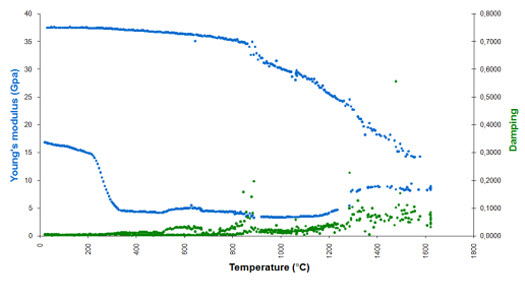
Measurement examples
The obtained elastic properties at elevated temperatures give a detailed insight into the extend of material bonding and its behavior under stress and rude conditions around 1600°C. The Young’s modulus curve decrease significantly at around 300°C which is characteristic of the dehydration of the cement in the concrete. After 800°C, the Young’s modulus increase up to the maximum temperature which indicates a sintering process in the material. The damping phenomena are high at about 880°C and 1284°C characterizing the imperfection that occur during the crystallization of cement component and fine element in the castable refractory material. After heating and subsequent cooling, the final Young’s modulus was around 38 GPa.

